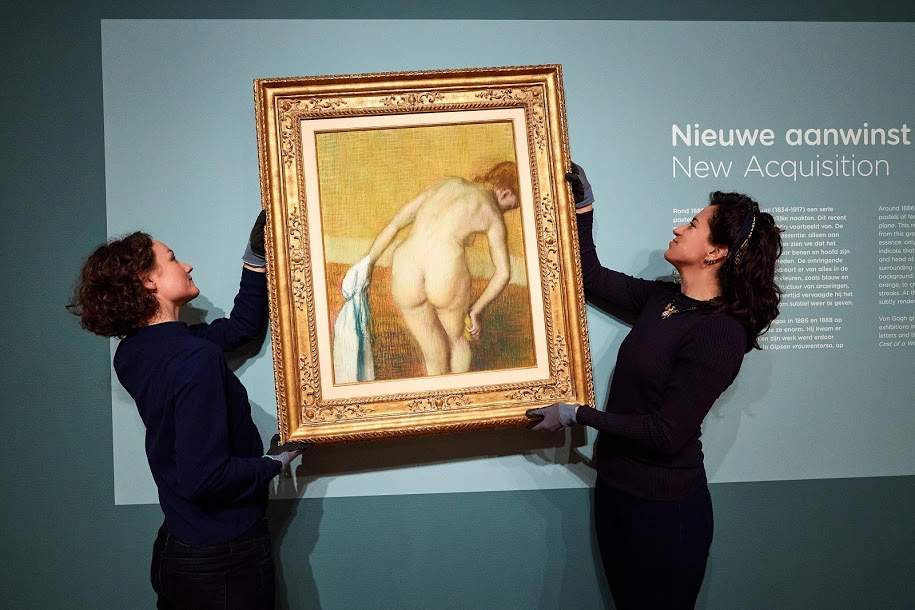The Van Gogh Museum in Amsterdam acquires an important pastel by Edgar Degas
An important acquisition for the Van Gogh Museum in Amsterdam, described as “exceptional” by the institution itself: it is a Woman Bathing, a pastel by Edgar Degas (Paris, 1834 - 1917), executed around 1886. Degas’ work shows us a naked woman in her intimacy, washing herself while holding a sponge in her right hand and a towel in her left. The work, which stands out for its use of pastel aimed at rendering the delicacy of the light that rests on the woman’s nude body, was also acquired by the Dutch museum because Vincent van Gogh showed great admiration for this production by Degas: his own work drew suggestions from it. Moreover, the acquisition is also important because the pastel is the first major work by Degas to enter a Dutch museum.
The pastel belongs to a group of about ten similar works executed by Degas between 1884 and 1887: at the time, the painter was focused on depicting bodies of nude women that could occupy the entire composition. After a period spent painting the Paris of the time, Degas preferred to focus his attentions on more intimate subjects, caught in the tranquility of a bedroom or bathroom. In these works there is no room for detailed depiction of interiors: all the focus is on the model and her pose, and secondary elements (in this case the sponge and towel) are kept to a minimum.
As mentioned, the work strikes us with the delicacy of the light that lingers on the girl’s body, but we are also attracted to the background, rendered with horizontal and vertical lines: the composition is built with hatching and patches of complementary colors (blue and orange, for example), used to achieve an effect of great intensity. The modernity of the work is enhanced by the fact that Degas chooses to arrange the girl in a slightly off-center position and has the edge of the frame cut off the head and legs from the composition itself. Degas, moreover, believed strongly in this type of work: usually pastels at the time were executed on paper of little value, whereas in this case the artist chose high quality paper. And it is also thanks to this choice that the pastel has reached us in excellent condition.
As for the relationship with van Gogh, we know that Degas, in 1886, had exhibited a group of pastels at the eighth exhibition of the Impressionists, gathering them under the title Suite de nus de femmes se baignant, se lavant, se séchant, s’essuyant, se peignant ou se faisant peigner (pastels ) (“Series of female nudes bathing, washing, drying, cleaning, combing or having their hair combed”). The work purchased by the Van Gogh Museum may have been part of the group. We know that van Gogh visited the exhibition, and if the Dutch painter had associated Monet with landscape, equally he had associated Degas with the nude: at that time, van Gogh himself was conducting some studies of the nude, and on these works one can discern the debt to Degas.
The Degas work will enrich the Van Gogh Museum’s collection of Impressionists and is already ready to be shown to the public. The acquisition was supported by BankGiro Loterij, the Mondriaan Fund, the Triton Collection Foundation and members of The Yellow House.
Pictured: Fleur Roos Rosa de Carvalho and Anne Steegstra of the Van Gogh Museum staff install the newly acquired Degas work.
 |
| The Van Gogh Museum in Amsterdam acquires an important pastel by Edgar Degas |
Warning: the translation into English of the original Italian article was created using automatic tools. We undertake to review all articles, but we do not guarantee the total absence of inaccuracies in the translation due to the program. You can find the original by clicking on the ITA button. If you find any mistake,please contact us.





























